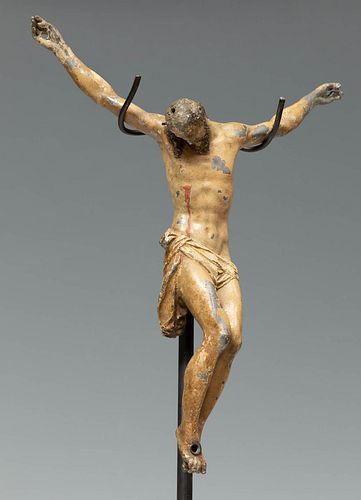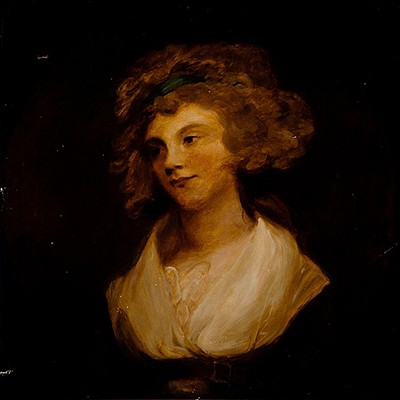Sevillian school; late sixteenth century. "Christ". Polychrome lead casting.
About Seller
Carrer Aragó 346
Barcelona
Spain
Setdart Subastas was born in 2004 and is currently the first online art auction in Spain with solidity, prestige and reliability guaranteed by our more than 60,000 users. Setdart has a young, dynamic and enterprising team ready to successfully manage the purchase and sale of art works through custom...Read more
Two ways to bid:
- Leave a max absentee bid and the platform will bid on your behalf up to your maximum bid during the live auction.
- Bid live during the auction and your bids will be submitted real-time to the auctioneer.
Bid Increments
| Price | Bid Increment |
|---|---|
| EUR€0 | EUR€10 |
| EUR€200 | EUR€25 |
| EUR€500 | EUR€50 |
| EUR€1,000 | EUR€100 |
| EUR€3,000 | EUR€200 |
| EUR€5,000 | EUR€500 |
| EUR€10,000 | EUR€1,000 |
| EUR€20,000 | EUR€2,000 |
| EUR€50,000 | EUR€5,000 |
About Auction
Nov 25, 2021
Setdart Auction House sofia@setdart.com
- Lot Description
Sevillian school; late sixteenth century. "Christ". Polychrome lead casting. It has slight losses of polychrome. Measurements: 19 x 18,5 cm. Crucifixions and crucifixes have appeared in the history of art and popular culture since before the era of the pagan Roman Empire. The crucifixion of Jesus has been depicted in religious art since the 4th century. It is one of the most recurrent themes in Christian art and the one with the most obvious iconography. Although Christ is sometimes depicted clothed, it is usual to represent his naked body, albeit with the genitals covered with a purity cloth (perizonium); full nudes are very rare, but prominent (Brunelleschi, Michelangelo, Cellini). The conventions of representation of the different attitudes of the crucified Christ are designated by the Latin expressions Christus triumphans ("triumphant" -not to be confused with the Maiestas Domini or the Pantocrator-), Christus patiens ("resigned" -not to be confused with the Christ of patience-) and Christus dolens ("suffering" -not to be confused with the Vir dolorum-). The triumphans is represented alive, with the eyes open and the body erect; the patiens is represented dead, with the will totally emptied (kenosis), the head inclined, the face with serene expression, the eyes closed and the body arched, showing the five wounds; the dolens is represented in a similar way to the patiens, but with a gesture of pain, particularly in the mouth (curved). In the Sevillian environment, the sixteenth century was a time of enormous economic and, therefore, also artistic boom, and it is in the last quarter of this century when Juan Martínez Montañés, who is considered one of the main figures of the Sevillian sculptural school and whose style united a certain classicism with, already, a slight baroque style, took up residence in this city. In addition, his workshop was a kind of "training school" for artists who would shape the Sevillian Baroque in sculpture: it is necessary to mention Juan de Mesa, Alonso Cano (both of whom introduced a greater Baroque style), etc. In the second third of the 17th century José Arce or Aertz introduces more Berninesque Baroque forms, and Pedro Roldán is the head and head of an important family workshop (also highlighting his daughter María Luisa Roldán, his grandson Pedro Duque y Cornejo, etc.). Towards the end, Francisco Ruiz Gijón, Benito de Hita y Castillo, José Montes de Oca (still following the forms of Montañés), etc. are usually highlighted. This type of works were very common in the Baroque, with the main objective of reaching the faithful through feeling, and although they were also made for churches and private oratories.
Dimensions:
INV Number:
19 x 18,5 cm.
35121914 - Shipping Info
-
In-house shipping available. Please inquire at admin@setdart.com.
-
- Buyer's Premium



 EUR
EUR CAD
CAD AUD
AUD GBP
GBP MXN
MXN HKD
HKD CNY
CNY MYR
MYR SEK
SEK SGD
SGD CHF
CHF THB
THB

















